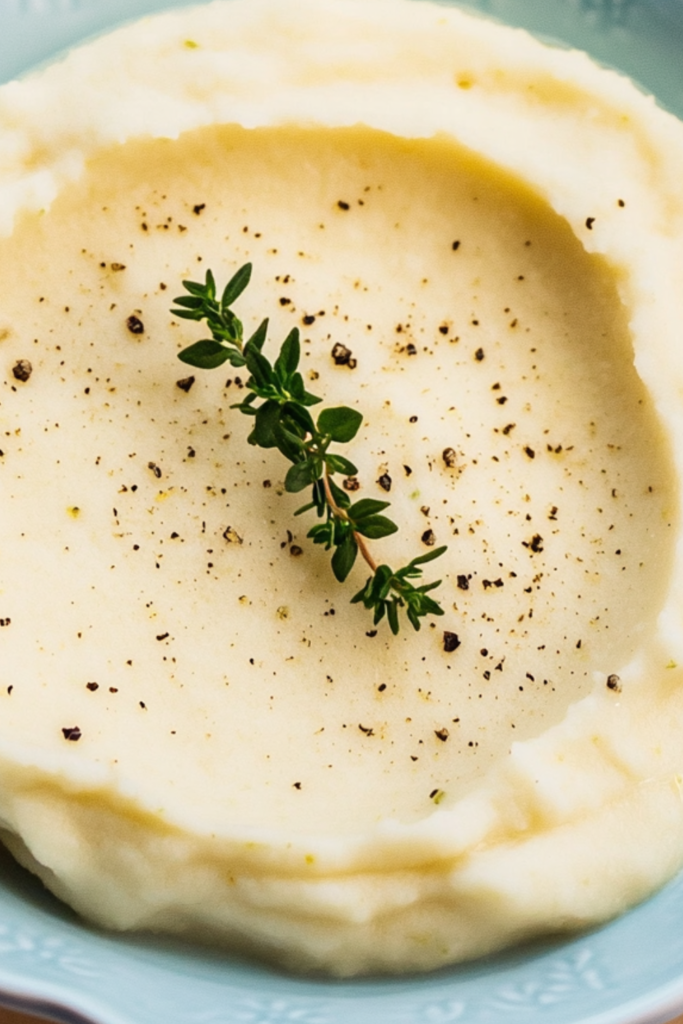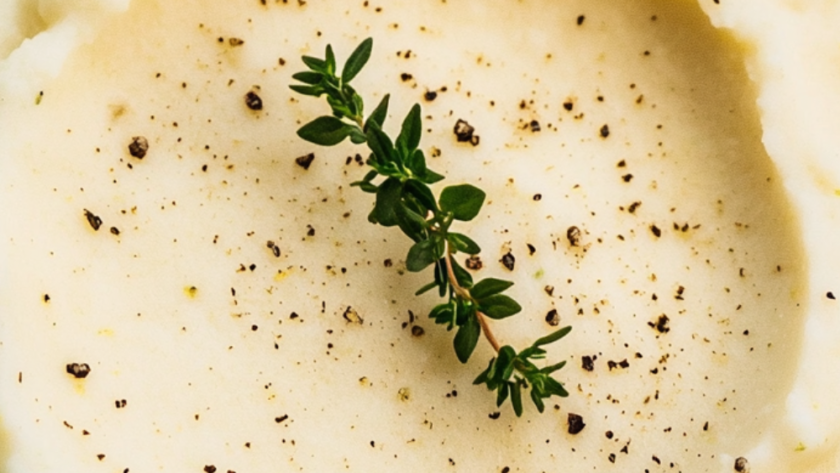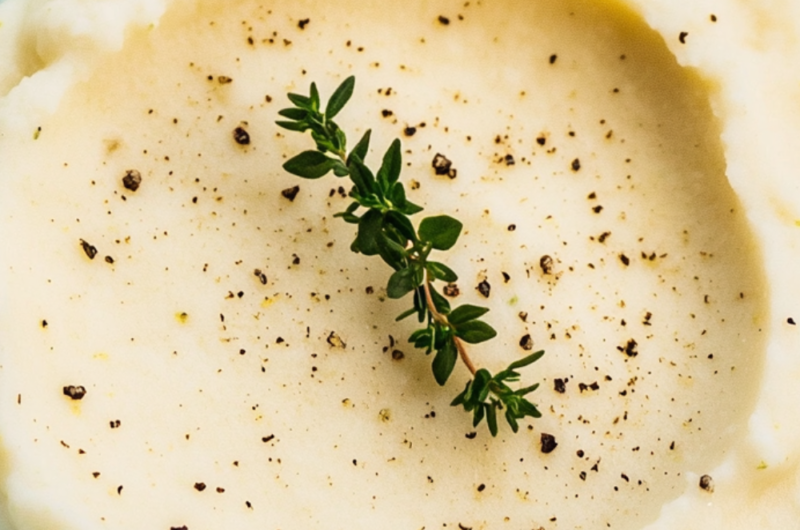The first time I made cauliflower purée, I treated it like mashed potatoes. Big mistake. I boiled the cauliflower straight in water, threw in some butter, blitzed it, and ended up with a sad, grainy mash that tasted like hospital food. Bland, watery, and totally forgettable.
Then I watched how Ramsay does it. This wasn’t “healthy mashed potatoes”—it was a velvety, restaurant-level side that could compete with any starch on the plate. The difference? It’s not just about ingredients. It’s about heat control, moisture discipline, and butter timing.
This version gives you that smooth, rich purée Ramsay pulls off in fine dining—without needing a Michelin star setup.
Why This Works (And Where Most Go Wrong)
Most cauliflower purées fail for one reason: too much water. Boiling cauliflower directly in water turns it into a sponge. You can drain it all you want, but it’s already absorbed enough liquid to turn your purée grainy and thin.
Ramsay avoids that by steaming in broth. You trap flavor inside while limiting water absorption. That’s how you get concentration, not dilution.
And then comes the butter. Add it cold to hot broth, not straight into the food processor. Why? Because emulsification matters. You want that fat suspended, not separated. That’s how you get silk, not soup.
Ingredients That Actually Matter
- 900g cauliflower (florets only) – Cut evenly for even cooking. Don’t use frozen unless you want a watery mess.
- 240ml chicken broth – This infuses flavor as it steams. Low-sodium gives you more control.
- 5g salt (plus more to taste) – Season the broth early; cauliflower is a blank canvas.
- 42g unsalted butter – Adds richness and binds the purée. Don’t skimp.
- 5g fresh thyme, chopped – Don’t use dried. It loses the brightness.
- Freshly ground black pepper – Adds depth and balances the fat.
How To Make Gordon Ramsay Cauliflower Purée
Bring your broth to a boil in a wide pot—not too deep. You want enough room for the cauliflower to spread out, steam evenly, and absorb flavor—not get soggy.
Add the cauliflower florets and immediately lower the heat to a gentle simmer. Lid on. Let them steam in that broth for 18–20 minutes until fork-tender. Not just soft—fall-apart soft.
Use a slotted spoon to transfer the cauliflower to your food processor. Don’t dump everything in. Too much liquid = grainy texture.
Back in the pot, whisk your butter into 3 tablespoons of the hot broth. This step is key. You’re making a loose emulsion that helps blend and carry the fat through the purée evenly.
Pour the butter-broth mixture into the food processor. Add thyme, black pepper, and a pinch more salt. Blend until completely smooth—you’re looking for silk, not grit. Scrape the sides, taste, and adjust.
If it’s too thick? Add warm broth a spoonful at a time. If it’s too thin? You went too hard with the liquid—next time, hold back and add slowly.

What Gordon Ramsay Says About This Dish
“Cauliflower’s a sponge—don’t drown it. Steam it with flavor.”
That’s why the broth matters. It gives you control and seasoning at the same time.
“Purée needs fat—but blend it properly or it splits.”
If you drop cold butter into the food processor, it won’t emulsify. Whisk it into hot broth first.
“A spoon should stand for a second, then sink.”
That’s your texture cue. It’s thick, but not heavy. Don’t serve soup.
“Season after blending—it changes as it emulsifies.”
Always taste after the blend. Thyme sharpens, salt intensifies.
What I Got Wrong (And How I Fixed It)
- Boiled in water – Killed the flavor and made it watery. Switched to steaming in broth.
- Added butter too early – It split. Fix: whisk into hot broth first.
- Overfilled the processor – Got uneven texture. Fix: blend in batches.
- Didn’t cook cauliflower long enough – Texture was gritty. Solution: go longer than you think, but keep it steaming, not boiling.
Variations That Actually Hold Up
With Garlic:
Add 1–2 cloves of roasted garlic into the blender. Not raw—it’ll overpower everything.
With Parmesan:
Stir in 2 tablespoons of finely grated Parmigiano-Reggiano after blending. Adds umami, not bulk.
Vegan Swap:
Use olive oil instead of butter and vegetable stock. Texture’s lighter, flavor’s still great.
Spiced Version:
Infuse the broth with a pinch of nutmeg or curry powder for depth. Do this during the boil stage.
Pro Tips That Change the Game
- Steam, don’t boil. Crucial for texture and flavor control.
- Warm your food processor bowl with a little hot broth beforehand for a smoother blend.
- Finish with a drizzle of olive oil if serving with roasted meat—it bridges the flavors.
- Serve warm, not hot. Heat can exaggerate the “brassica” note in cauliflower.
Storage + Leftover Moves
- Fridge: 3 days in an airtight container. Keep the surface flat to avoid a skin.
- Freeze: Yes, up to 2 months. Reheat slowly and re-blend if texture splits.
- Reheat: Use a saucepan on low heat with a splash of broth to bring it back to life.
- Next-day move: Use as a bed for roasted mushrooms or under a seared scallop.
FAQs – Covering Search Intent
Q: Can I use frozen cauliflower?
You can, but it’ll be wetter and less flavorful. If it’s all you’ve got, roast it first to dry it out.
Q: Why is Ramsay’s cauliflower purée so smooth?
Steam instead of boil. Emulsify butter separately. Blend hot. That’s the holy trinity.
Q: Can I make it dairy-free?
Yes. Use olive oil or vegan butter, but warm it before blending.
Q: What’s the best way to reheat it?
Stovetop, low heat, with a touch of broth. Avoid microwaving unless you stir constantly.
Q: Is it supposed to be thick or thin?
Medium-thick. Spoon should leave trails but not stand up forever. Think silk, not sludge.
Try More Recipes:
- Gordon Ramsay Prawn Cocktail Recipe
- Gordon Ramsay’s Buffalo Wings Were the Chaos Meal That Centered Me
- Gordon Ramsay’s Chip Butty Reminded Me Why I Love the Simple Things
- Gordon Ramsay’s Shrimp Cocktail Was the Meal I Didn’t Know I Needed
Gordon Ramsay Cauliflower Puree Recipe
Course: Side DishesCuisine: BritishDifficulty: Easy4
servings10
minutes20
minutes227
kcalSilky, buttery cauliflower purée that’s rich, smooth, and packed with flavor—perfect as a refined side for any dish.
Ingredients
900g cauliflower (florets only)
240ml chicken broth (low-sodium)
5g salt, plus to taste
42g unsalted butter, cubed
5g fresh thyme, chopped
Black pepper, to taste
Directions
- Bring chicken broth and salt to a boil in a wide pot.
- Add cauliflower florets. Reduce to low, cover, and steam for 20 minutes until fork-tender.
- Transfer cauliflower to a food processor with a slotted spoon.
- In the pot, whisk butter into 3 tbsp of hot broth until smooth.
- Pour butter mixture into processor with thyme, pepper, and salt to taste.
- Blend until completely smooth. Adjust texture with warm broth if needed.
- Serve warm.
Notes
- Steam, don’t boil. Crucial for texture and flavor control.
- Warm your food processor bowl with a little hot broth beforehand for a smoother blend.
- Finish with a drizzle of olive oil if serving with roasted meat—it bridges the flavors.
- Serve warm, not hot. Heat can exaggerate the “brassica” note in cauliflower.

